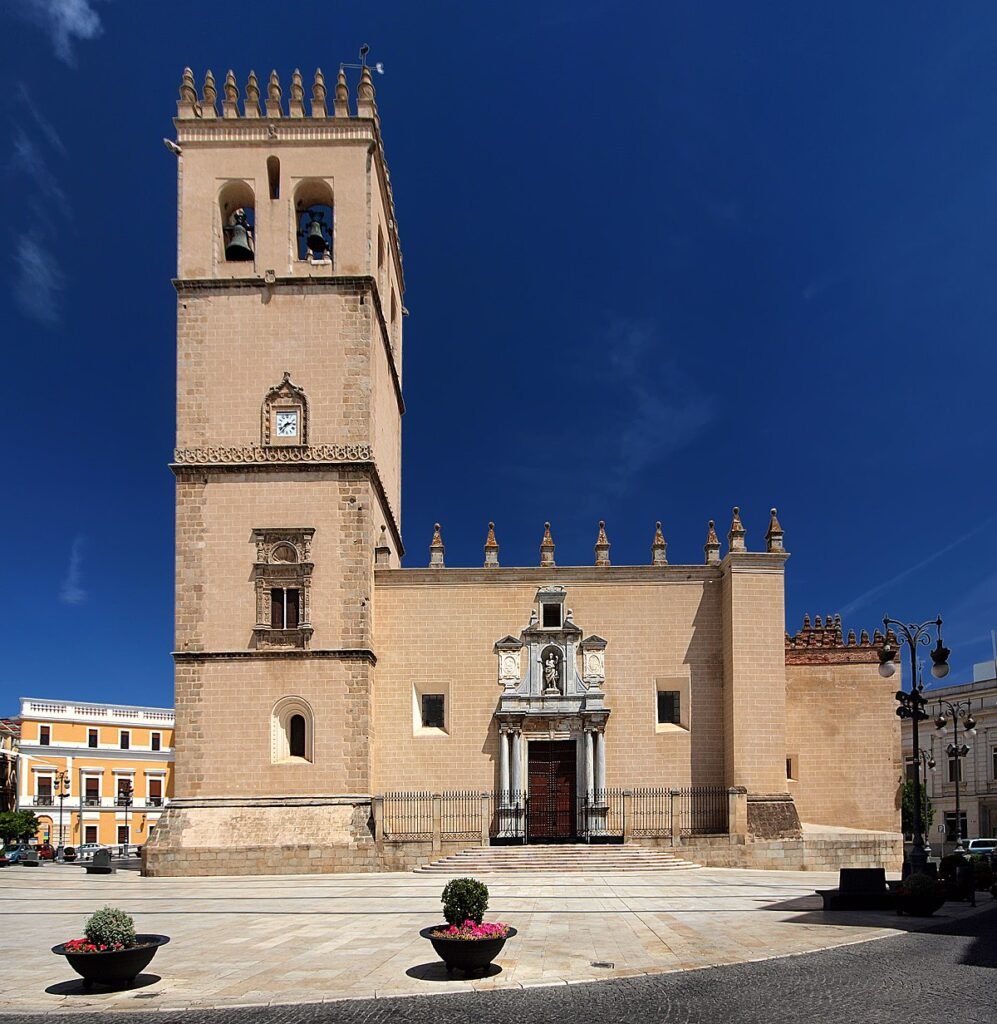Badajoz city in western Spain, in the autonomous region of Extremadura, capital of the province of Badajoz. Located on the Guadiana River, near the border with Portugal. Service, commercial and industrial center of the agricultural region. The city has developed food, leather and wood industries.

- The museum is housed in the house of the painter Luis Morales, a building built in the 16th century. During the visit, you can learn about the history of the city of Badajoz, from the first settlers, through the Roman, Visigothic and Arab civilizations, to the present day. One of the rooms is dedicated to the famous painter Luis Morales (16th century), who created most of his works in churches and palaces in Spain and Portugal. The tour is accompanied by explanatory panels, display cases, reproductions, and timetables.

- The museum’s collections focus on painting and sculpture. The building itself is housed in a palace dating back to the late 19th century. The collection consists of over 2,000 works by over 300 painters and sculptors from the 18th to the 20th century. Of particular note are paintings by Zurbarán and Esquivel, sculptures by Cabrera, drawings by Alberti, and engravings by Picasso and Dalí.

- The building houses a collection of around 1,500 works of contemporary art. The museum, which occupies the building of a former prison, has works by artists from Spain, Portugal and America. In addition to the exhibition hall, it has a library, a documentation centre, an auditorium and a garden.
- The museum collects interesting works of religious art. The most important elements of the collection of the Cathedral Museum include valuable paintings by the painter Luis Morales, as well as goldsmiths’ products and antique tapestries.

- Declared a Historic-Artistic Monument in 1931. It has an impressive wall, in which the Atalaya Tower, known as the Espantaperros Tower, stands out. Inside is the Palace of the Dukes of La Roca, built in the 16th century, currently home to the Provincial Archaeological Museum.

- Cathedral of St. John the Baptist. From the outside, the structure of the cathedral resembles a fortress. It was built to ensure its security due to the constant wars that plagued the city. Its construction began after the conquest of Badajoz by King Alfonso IX in the 13th century. The building is topped with a battlement and has a high tower on a quadrangular plan, with windows in the second body. It has three entrance gates, the main one being the Gate of St. John the Baptist, topped with an image of the saint. Inside, it has a basilica plan with three five-part naves, a transept and a three-apse presbytery. It is covered with vaults in a decadent Gothic style.

